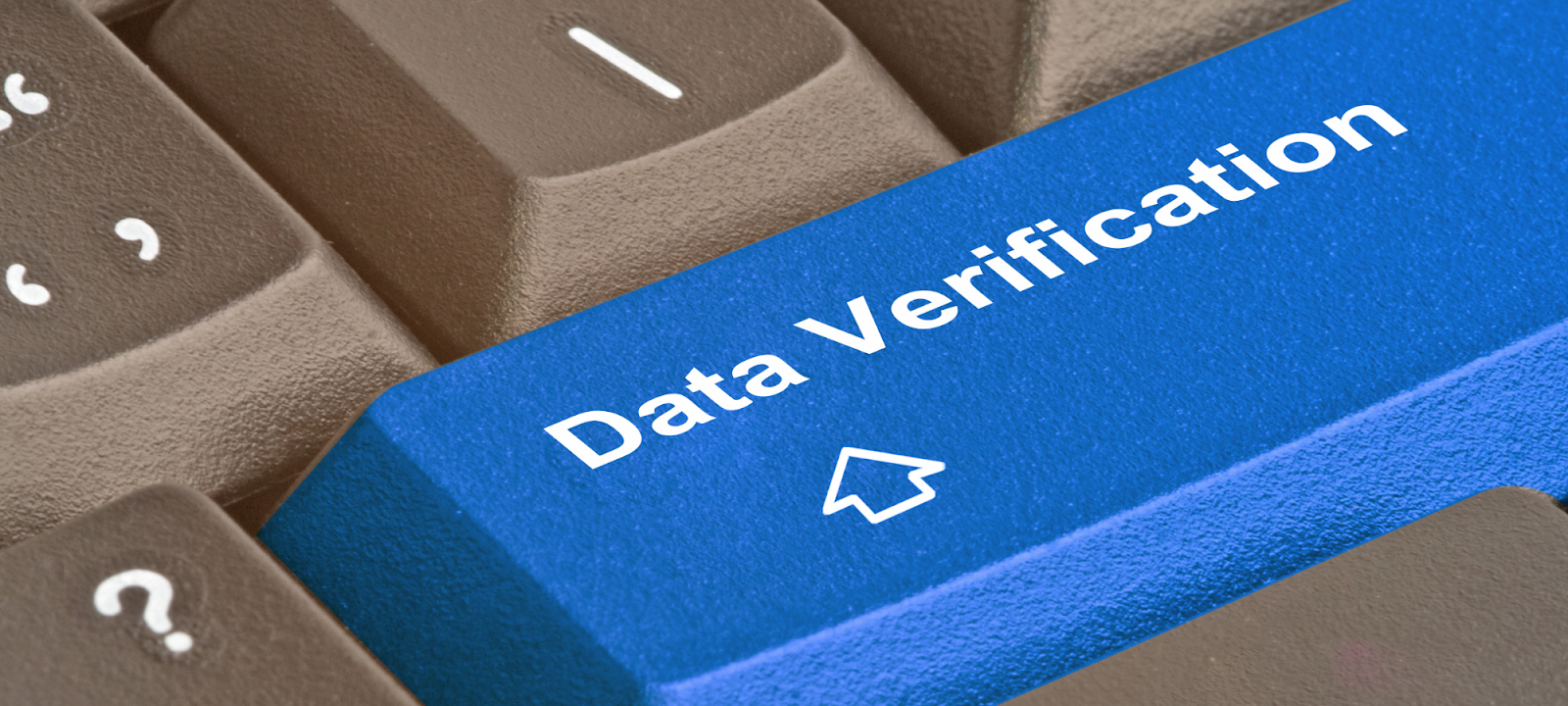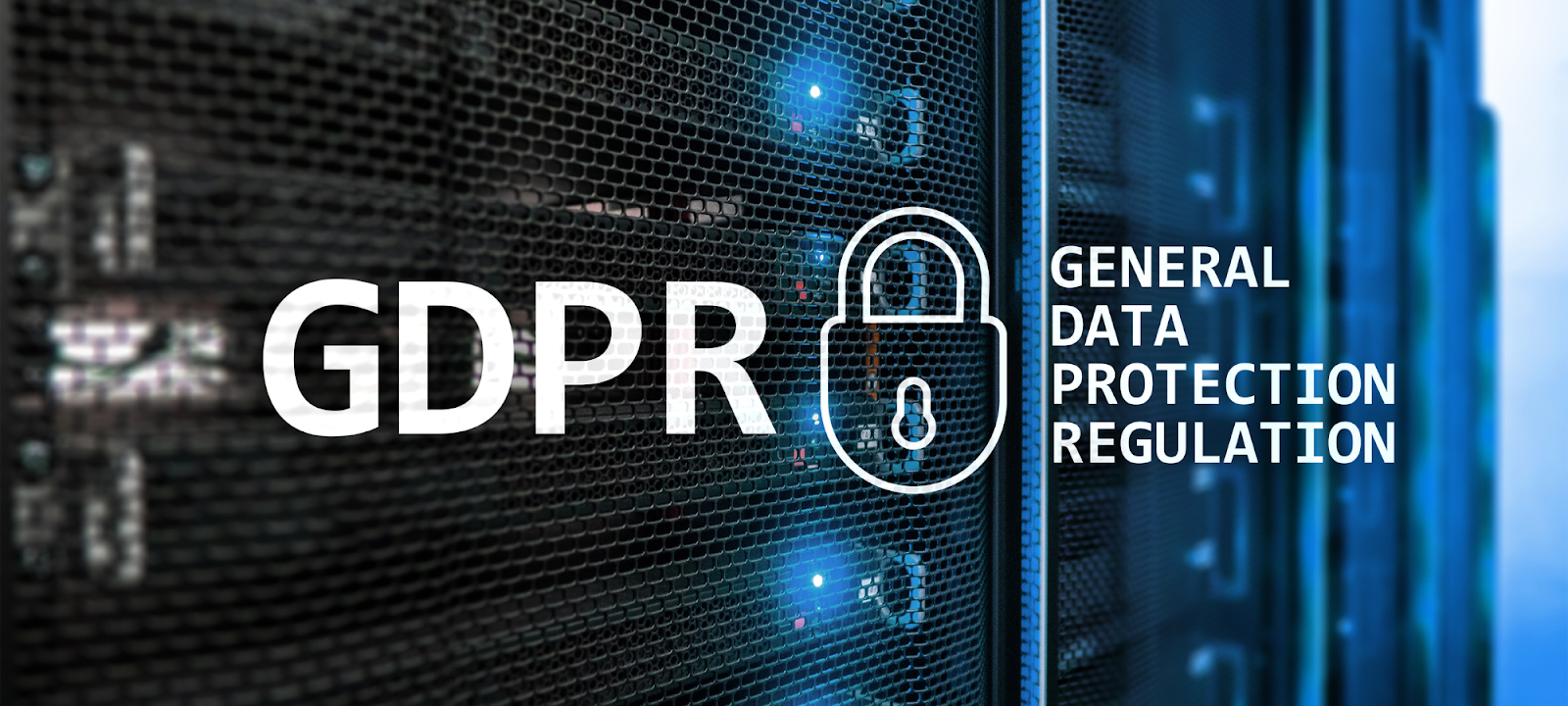
The Critical Nature of Data Integrity in Modern Business
In today’s digital economy, data is one of the most valuable assets any organization possesses.
Maintaining accurate, consistent, and secure data is essential for decision-making, service delivery, and staying competitive. However, threats like cyber attacks, human error, natural disasters, or hardware failures can disrupt operations and compromise sensitive data in costly, hard-to-reverse ways.
Data integrity means more than preventing loss—it ensures stored data stays accurate, complete, and safe from unauthorized changes. When breaches or corruption occur, recovery must preserve both authenticity and integrity.
This is where secure data recovery becomes vital. It enables businesses to restore information safely, minimize downtime, and maintain compliance with data protection laws. Encrypted recovery services further protect sensitive information during restoration and guard against evolving cyber threats.
Ultimately, integrating secure recovery into a business continuity plan helps organizations protect critical data, ensure minimal disruption, and maintain operational resilience during high-impact incidents.
By following best practices and implementing robust recovery processes, businesses can build resilience against evolving threats and maintain operational stability.
What Is Data Integrity and Why It Matters?
Data integrity refers to the accuracy, consistency, and reliability of data throughout its lifecycle. Data integrity ensures sensitive information remains unchanged and trustworthy as it moves through different systems and storage environments. Maintaining it is essential for accurate analytics, customer records, financial reporting, and regulatory compliance.
When integrity issues arise—whether from cyber threats, hardware failures, human error, or natural disasters—they can cause poor decision-making, reputational harm, and costly remediation. In regulated industries like healthcare or finance, compromised integrity can also lead to legal liabilities and regulatory penalties.
Ensuring integrity requires strict access controls, data validation, and encryption to prevent unauthorized changes or accidental corruption. These measures not only maintain trust in stored data but also support efficient recovery when issues occur.
Secure data recovery works alongside these best practices, allowing organizations to restore information safely and verify authenticity after an incident. This combination protects data reliability and ensures business continuity even during disruptive events.
This dual approach enhances data security while ensuring business continuity and operational resilience.

Common Causes of Data Integrity Issues
Data integrity issues can arise from multiple sources, often catching organizations off guard and leading to significant data loss incidents. Understanding these causes is critical for implementing effective recovery plans and maintaining business continuity.
Human Error
Simple mistakes, such as accidental deletion, incorrect data entry, or misconfigured systems, remain one of the most common causes of data integrity issues. While often unintentional, these errors can compromise sensitive information and disrupt normal business operations.
Cyber Threats and Data Breaches
Evolving threats such as ransomware, malware, and phishing attacks target valuable data to encrypt, steal, or corrupt it. Data breaches not only compromise sensitive data but also put organizations at risk of regulatory noncompliance and reputational harm.
Hardware Failures
Physical infrastructure, including servers, storage devices, and network equipment, can fail unexpectedly, leading to data corruption or permanent data loss. Hardware failures highlight the need for robust data protection and redundancy strategies.
Natural Disasters and Environmental Factors
Floods, fires, and other natural disasters can damage data centers and disrupt access to critical systems. Without secure data recovery plans, valuable data may become permanently inaccessible.
Software Glitches and Application Errors
Buggy applications or faulty updates can corrupt production environment data, impacting business-critical processes and compromising referential integrity.
Insider Threats
Not all threats come from external actors. Disgruntled employees or unauthorized users with access privileges can intentionally alter or delete data. This risk underscores the need for strict access controls and role-based permissions.
Addressing these risks with encryption protocols, data validation, and comprehensive recovery strategies strengthens security. Additionally, these measures minimize downtime when data integrity issues arise.

The Role of Secure Data Recovery
Secure data recovery is more than simply retrieving lost files—it’s about ensuring the recovered data is accurate, safe, and compliant with data protection regulations.
In today’s environment, where sensitive data is constantly at risk from cyber threats, natural disasters, and human error, the recovery process must prioritize both data integrity and security.
Protecting Sensitive Data During Recovery
Secure data recovery solutions use advanced encryption protocols and strict access controls to ensure sensitive data remains protected during the recovery effort.
Role-based access controls and authorization policies limit access to only authorized personnel, reducing the risk of compromised data during restoration.
Ensuring Data Integrity Throughout the Process
Maintaining data integrity during recovery is critical. The recovery process must include data validation and data verification steps to ensure the restored data matches its original state.
Any data corruption or data integrity issues identified must be corrected before placing the recovered data back into production environments.
Compliance and Regulatory Considerations
Secure data recovery strategies must align with regulatory compliance requirements, including industry standards and data protection regulations. Compliance-driven recovery plans help avoid legal penalties while ensuring the protection of sensitive information.
Supporting Business Continuity and Resilience
Successful data recovery efforts are essential for minimizing downtime and maintaining business continuity. Recovery strategies that include robust security measures, validated data integrity, and quick recovery times allow organizations to resume critical business operations with minimal disruption.
The Competitive Advantage of Secure Data Recovery
Organizations with a proven track record in secure data recovery gain a competitive edge, as they can confidently handle data loss incidents and quickly restore critical business systems. Securely recovering data not only protects valuable data but also builds trust with customers, partners, and stakeholders.

Key Features of Data Recovery Solutions
Modern data recovery solutions are designed to handle complex data loss scenarios while ensuring data integrity and security. These solutions incorporate advanced technologies and processes to securely recover data and minimize downtime, supporting business continuity and resilience.
Data Validation and Verification
A critical feature of any secure data recovery solution is data validation and verification. After recovery, the data must be checked for accuracy and completeness, ensuring referential integrity and avoiding potential data integrity issues that could disrupt business operations.
Encryption Protocols for Data Security
Strong encryption protocols are a core component of secure data recovery. Encryption ensures sensitive data is protected during transfer, storage, and restoration, mitigating the risk of unauthorized access or compromised data.
Recovery Point and Time Objectives (RPOs and RTOs)
Effective data recovery solutions define clear recovery point objectives and recovery time objectives.
These metrics establish how much data loss is acceptable (RPO) and how quickly recovery must be completed (RTO), helping organizations align recovery strategies with operational priorities.
Role-Based Access Controls (RBAC)
Restricting recovery access to authorized personnel is essential for preventing unauthorized access and maintaining data security. RBAC ensures that only trained and authorized individuals can initiate or oversee recovery processes.
Comprehensive Support and Forensic Analysis
Many secure data recovery solutions offer comprehensive support, including forensic analysis to identify root causes of data loss incidents. This proactive approach not only aids recovery but also helps mitigate future risks and strengthens overall data protection strategies.
Integration with Disaster Recovery and Cloud Computing
Modern recovery systems often integrate with disaster recovery plans and cloud computing environments. Cloud-based solutions offer scalable storage and rapid recovery options, while disaster recovery integration ensures business continuity in the face of natural disasters, cyber threats, or hardware failures.
Secure Retrieval and Minimal Disruption
The ability to securely retrieve data while minimizing disruption to business operations is a key differentiator for advanced recovery solutions. This ensures that critical business operations continue with minimal downtime, supporting business resilience and competitive edge.

Developing Effective Recovery Strategies
A strong data recovery strategy is essential for mitigating risks associated with data loss scenarios and ensuring business continuity. These strategies should focus on securely recovering data while minimizing downtime and maintaining data integrity throughout the recovery process.
Assessing Critical Business Operations and Data
Start by identifying the critical nature of your business operations and the valuable data required to keep them running. This step ensures recovery strategies are prioritized for application data, production environments, and sensitive information.
Establishing Clear Recovery Objectives
Define recovery point objectives (RPOs) and recovery time objectives (RTOs) that reflect your organization’s operational needs and regulatory compliance requirements. These benchmarks guide how frequently data backups occur and how quickly restored data must be available.
Implementing Strict Access Controls
Role-based access controls and encryption protocols are key features of secure data recovery. These measures ensure that only authorized personnel can securely retrieve data during recovery efforts, reducing the risk of compromised data or unauthorized access.
Leveraging Cloud Computing and Offsite Solutions
Incorporating cloud computing into your data recovery strategies enhances data security and supports rapid recovery. Cloud-based solutions enable storing critical data in multiple locations, improving resilience to natural disasters, cyber threats, and hardware failures.
Routine Testing and Validation
Organizations should continuously test their data recovery plans and procedures to ensure ongoing effectiveness, security, and reliability as part of their business continuity and disaster recovery strategies. Data validation and referential integrity checks help ensure restored data matches original datasets, avoiding potential data corruption and integrity issues.
Continuous Improvement and Adaptation
Evolving threats and emerging technologies require that data recovery strategies remain dynamic. By regularly reviewing and updating recovery plans, businesses can adapt to evolving threats, industry standards, and changing production environments.
Comprehensive Protection Through Layered Approaches
Combine secure data recovery solutions with robust data protection regulations, encryption protocols, and access control policies. This layered approach ensures comprehensive protection and business resilience even in severe data loss incidents.

Implementing Secure Data Recovery Solutions
Secure data recovery solutions play a pivotal role in protecting sensitive data, ensuring data integrity, and enabling organizations to recover data with minimal disruption. Selecting and deploying the right solutions is critical for achieving regulatory compliance, maintaining business continuity, and safeguarding valuable data from evolving threats.
Evaluating Key Features and Capabilities
When choosing secure data recovery solutions, organizations should look for key features such as encryption protocols, strict access controls, and support for recovery point objectives (RPOs) and recovery time objectives (RTOs). These features ensure that data can be securely recovered while adhering to industry standards and best practices.
Leveraging Proven Recovery Systems
Solutions with a proven track record of successful data recovery are essential. Vendors should provide comprehensive support, including robust recovery systems and forensic analysis capabilities, to securely recover data in various data loss scenarios, from human error to natural disasters and cyber threats.
Cloud-Based and On-Premises Options
Cloud computing has transformed secure data recovery by enabling data storage in multiple locations and providing rapid recovery capabilities.
However, on-premises recovery systems may still be necessary for businesses that require complete control of application data or operate in highly regulated production environments. A hybrid approach often provides the best balance of flexibility and control.
Role-Based Access and Authorized Personnel
Recovery processes should enforce role-based access controls (RBAC), ensuring that only authorized personnel can access or manipulate restored data. This reduces the likelihood of data breaches and protects sensitive information during recovery efforts.
Minimizing Downtime Through Automation
Advanced secure data recovery solutions often include automation to streamline recovery processes. Automated workflows reduce manual intervention, speed up recovery efforts, and help businesses resume operations faster, maintaining business continuity with minimal disruption.
Supporting Compliance and Regulatory Requirements
Solutions must comply with data protection regulations and meet industry standards for secure data. This includes implementing encryption protocols, maintaining referential integrity, and providing comprehensive audit trails for forensic analysis and regulatory compliance.
Ensuring Scalability for Evolving Data Volumes
As data volumes grow, secure data recovery solutions must scale to handle large datasets and complex recovery processes. Scalable architectures, often cloud-native in design, ensure organizations can recover data securely regardless of its size or complexity.

Leveraging Data Encryption for Secure Recovery
Data encryption is one of the most effective ways to protect sensitive information and maintain integrity during recovery. Encrypting data ensures that even if unauthorized users gain access, the information remains unreadable without the correct decryption keys.
Encryption for Data in Transit and at Rest
Modern recovery solutions use advanced encryption protocols to protect data both at rest and in transit. This safeguards critical information whether stored on cloud platforms, backup devices, or production environments.
Meeting Regulatory and Industry Standards
Encryption also supports compliance with regulations like GDPR, HIPAA, and SOC 2. These standards require securing sensitive information during recovery and incident response.
Defending Against Evolving Threats
Ransomware and data breaches often target backup files. Encryption ensures stolen or compromised data cannot be exploited, reducing risk and strengthening defense.
Supporting Business Continuity
Encrypted backups help meet recovery time (RTO) and recovery point (RPO) objectives. They enable secure, rapid restoration of data without compromising integrity, ensuring minimal operational disruption.
Balancing Security and Performance
While encryption adds vital protection, it must be implemented efficiently to avoid slowing recovery processes. Selecting secure data recovery solutions optimized for encryption ensures businesses can securely recover data while maintaining optimal performance.

Role-Based Access Controls in Data Recovery
Role-based access controls (RBAC) are critical to ensuring secure data recovery processes and maintaining data integrity. By limiting access to authorized personnel only, organizations can prevent unauthorized individuals from viewing or manipulating sensitive information during recovery efforts.
Protecting Sensitive Data During Recovery
RBAC ensures that only individuals with the proper clearance can access critical recovery systems and sensitive data. This approach reduces the risk of human error, data breaches, and data corruption during recovery processes.
Aligning with Data Protection Regulations
Regulatory compliance frameworks, such as HIPAA, PCI DSS, and GDPR, emphasize strict access controls for data recovery strategies. RBAC provides a structured method to meet these compliance requirements while maintaining business continuity.
Enhancing Security Measures in Recovery Environments
Role-based access controls integrate with recovery systems and service level agreements to ensure data securely flows through recovery processes without compromising security measures or recovery objectives. This is particularly critical when handling application data or stored data from multiple locations.
Supporting Forensic Analysis and Incident Response
RBAC facilitates forensic analysis by clearly documenting who accessed which data and when. This level of visibility helps security teams address evolving threats, investigate data loss incidents, and improve overall security posture.
Building Trust and Business Resilience
By implementing strict access controls and RBAC policies, organizations gain a competitive edge. Customers, regulators, and partners trust that data securely handled during recovery efforts minimizes risks while supporting business resilience.

The Critical Role of Disaster Recovery in Ensuring Data Integrity
Disaster recovery (DR) is a cornerstone of maintaining data integrity and ensuring business continuity.
Impact of Data Loss on Operations
Whether caused by natural disasters, cyber threats, or human error, data loss can disrupt operations and compromise sensitive information. However, a robust disaster recovery plan allows businesses to recover data securely, minimize disruption, and maintain operational stability.
Linking Data Recovery to Business Continuity
A strong disaster recovery plan aligns with recovery time objectives (RTOs) and recovery point objectives (RPOs). This ensures quick data restoration, the resumption of critical operations, and confidence in data integrity even under pressure.
Integrating Data Integrity Safeguards
Modern disaster recovery strategies use encryption, data validation, and secure retrieval to protect information during restoration. These measures ensure recovered data remains accurate, uncorrupted, and compliant with regulations.
Addressing Evolving Threats
From hardware failures to advanced cyber threats, disaster recovery plans prepare organizations for diverse loss scenarios. Including secure recovery solutions helps businesses withstand evolving risks while safeguarding sensitive data.
Minimizing Downtime and Ensuring Compliance
Downtime after data loss damages both revenue and reputation. Embedding disaster recovery into core business processes reduces downtime, maintains compliance, and strengthens long-term resilience.ain compliance with industry standards, and ensure sensitive data is protected throughout the recovery process.

Minimizing Downtime with Proven Data Recovery Solutions
Minimizing Downtime from Data Loss
Downtime from data loss can severely disrupt operations, from halting production to eroding customer trust. Proven recovery solutions minimize disruption and quickly restore data, ensuring critical processes remain operational.
Rapid Recovery Processes
Tested recovery systems restore data securely and quickly, meeting recovery time objectives (RTOs) while maintaining integrity. They use advanced encryption and secure retrieval to protect sensitive data during restoration.
Reducing Data Loss Impact
From cyber threats to natural disasters, tested recovery strategies address data loss efficiently. This reduces downtime while preserving access controls and safeguarding sensitive information.
Enhancing Business Resilience
Implementing recovery systems with a strong track record strengthens resilience and provides a competitive advantage in high-stakes environments. Such systems ensure minimal disruption, safeguard stored data, and support secure data recovery processes that maintain regulatory compliance.

Regulatory Compliance and Data Integrity Standards
Regulatory compliance is a core driver of secure data recovery strategies, ensuring that businesses meet industry standards while protecting sensitive information. By aligning recovery processes with data protection regulations, organizations maintain business continuity and safeguard data integrity.
Meeting Industry Standards
Standards such as GDPR, HIPAA, and other data protection regulations mandate strict access controls, encryption protocols, and secure retrieval methods. Compliance ensures sensitive data is handled correctly during recovery, minimizing legal risks and penalties.
Data Integrity and Verification Requirements
Many regulatory frameworks require maintaining data integrity and ensuring data verification throughout recovery efforts. This includes implementing role-based access controls and using data validation processes to securely recover data without corruption or unauthorized changes.
Comprehensive Documentation
Compliance also demands detailed documentation of recovery processes, recovery point objectives (RPOs), and recovery time objectives (RTOs). Clear documentation demonstrates adherence to security measures and helps maintain customer trust while protecting valuable data.
Security Measures for Secure Data Recovery

Robust security measures are essential to protect data during recovery processes, ensuring that sensitive data remains uncompromised and that recovery systems meet industry standards. Implementing these measures enhances data security and minimizes risks during data retrieval.
Encryption Protocols for Data Protection
Encrypting stored data and transmission channels ensures that even if recovery efforts are intercepted, unauthorized personnel cannot access or alter valuable data. This step is critical to maintaining data integrity and ensuring secure retrieval.
Role-Based Access Controls
Restricting access to authorized personnel reduces the risk of accidental or malicious interference with recovery processes. Role-based access controls ensure that only trained staff handle sensitive information, minimizing exposure during critical recovery operations.
Continuous Threat Monitoring
Integrating threat monitoring into recovery systems helps identify evolving threats and potential breaches during data recovery. Detecting suspicious activity early allows organizations to respond quickly, preventing data corruption or loss during recovery efforts.
Secure Storage and Retrieval Processes
Implementing strict storage protocols and secure retrieval mechanisms ensures data integrity from initial backup to final restoration. This includes validating restored data to confirm it matches original states without corruption.

Business Resilience and Data Integrity
Business resilience depends on maintaining data integrity across all operations, especially during and after disruptive events. A secure data recovery strategy is fundamental to ensuring continuity and minimizing downtime.
Ensuring Continuity During Data Loss Scenarios
Organizations face numerous data loss scenarios, from hardware failures to cyber threats and natural disasters. Maintaining business continuity requires recovery plans that account for these challenges and ensure that data recovery processes function seamlessly.
Integrating Data Recovery With Operations
Embedding secure data recovery processes into daily business operations enhances overall resilience. This approach ensures critical systems and sensitive data are consistently protected, reducing the impact of unexpected data loss incidents.
Leveraging Proven Data Recovery Solutions
A proven track record in secure data recovery demonstrates reliability and minimizes operational disruptions. Selecting recovery solutions that align with industry standards and regulatory compliance supports long-term operational stability.
Building a Culture of Resilience
Promoting awareness of data integrity and recovery strategies within teams ensures personnel understand the critical nature of protecting data and can act quickly to mitigate risks.
Industry Standards and Regulatory Compliance
Adhering to industry standards and regulatory compliance is critical for maintaining data integrity and supporting secure data recovery efforts. These frameworks guide organizations in developing reliable recovery systems and security measures.
Regulatory Requirements for Data Protection
Data protection regulations, such as GDPR and HIPAA, set strict rules for managing and securing sensitive information. Compliance with these regulations ensures businesses securely recover data while protecting sensitive data from unauthorized access.
Implementing Data Protection Regulations
Recovery processes must align with data protection regulations to ensure secure retrieval and storage of recovered data. Encryption protocols, access controls, and robust data validation mechanisms are essential components of compliant recovery efforts.
Enhancing Data Security With Standards
Industry standards provide clear guidelines for recovery point objectives (RPOs), recovery time objectives (RTOs), and strict access controls. These standards ensure minimal disruption during recovery efforts and help safeguard valuable data against evolving threats.
Achieving Regulatory and Operational Harmony
Balancing regulatory compliance with operational needs allows organizations to maintain business continuity while meeting legal obligations. This alignment supports competitive advantage through demonstrated commitment to secure data recovery and overall data integrity.
Key Features of Secure Data Recovery Solutions
Secure data recovery solutions are designed to handle sensitive data responsibly while ensuring fast, efficient, and compliant restoration processes. These solutions focus on maintaining data integrity and minimizing operational disruptions.
Encryption Protocols and Security Measures
Advanced encryption protocols ensure that data securely travels during the recovery process, protecting against unauthorized access and cyber threats. Strong security measures, including role-based access controls, further safeguard valuable data throughout recovery systems.
Comprehensive Protection and Recovery Capabilities
Modern data recovery solutions offer comprehensive support for various data loss scenarios, including hardware failures, natural disasters, and human error. This level of coverage ensures robust data protection and secure retrieval of lost data with minimal disruption.
Automated Recovery Processes
Automation within secure data recovery solutions accelerates the recovery effort, reducing manual intervention and minimizing downtime. These automated systems verify and validate restored data to ensure accuracy and referential integrity.
Proven Track Record and Compliance
Solutions with a proven track record often meet strict service level agreements (SLAs) and regulatory compliance requirements. This ensures organizations can securely recover data while demonstrating adherence to data protection regulations and industry standards.
Implementing Best Practices for Secure Data Recovery
Adopting best practices for secure data recovery ensures that organizations can protect data and securely recover data with minimal disruption. These practices combine technology, processes, and people to create a robust data protection framework.
Regular Testing and Validation
Routine testing of recovery processes ensures that recovery plans work when needed and that restored data maintains data integrity. Testing also validates recovery time objectives (RTOs) and recovery point objectives (RPOs).
Strict Access Controls
Implementing role-based access controls (RBAC) limits recovery efforts to authorized personnel. This reduces the risk of unauthorized access to sensitive data and helps maintain regulatory compliance.
Encryption and Secure Storage
Use data encryption to secure both stored data and data in transit. Ensuring that encrypted backups are part of the recovery process protects sensitive data during restoration.
Comprehensive Support and Documentation
Having a clear, well-documented data recovery plan provides guidance during high-stress recovery scenarios. Comprehensive support from vendors or internal teams ensures minimal downtime and quick recovery.
Continuous Monitoring and Forensic Analysis
Monitoring evolving threats and analyzing data loss incidents helps improve recovery strategies over time. Forensic analysis after a data breach or corruption incident strengthens security measures and enhances data security.

Building a Skilled Recovery Team
A skilled recovery team is crucial for ensuring successful data recovery and maintaining data integrity during critical recovery efforts. Having the right people in place enables organizations to recover data securely and minimize disruption to business operations.
Expertise in Data Recovery Solutions
Team members should have experience with different data recovery processes and tools. This includes knowledge of secure data recovery techniques, encryption protocols, and compliance requirements that protect sensitive data during restoration.
Cross-Functional Collaboration
Recovery teams often include IT staff, security specialists, and compliance officers. This collaboration ensures that recovery strategies address both technical requirements and regulatory obligations, enhancing overall business resilience.
Ongoing Training and Certification
Regular training sessions help ensure team members stay current with evolving threats, recovery processes, and industry standards. Certifications in disaster recovery and secure data recovery demonstrate commitment to maintaining best practices and enhancing organizational readiness.

Continuous Improvement for Long-Term Success
Data recovery and data integrity management are not static processes—they must evolve with changing business needs and emerging threats. Continuous improvement ensures that secure data recovery strategies remain effective and aligned with industry standards.
Routine Audits and Testing
Regular testing of recovery processes and disaster recovery plans verifies that data can be restored efficiently and securely. These audits also help identify weaknesses in access controls, encryption protocols, and overall recovery strategies.
Staying Ahead of Evolving Threats
Cyber threats, data breaches, and new forms of data corruption require ongoing vigilance. Monitoring industry trends and adopting new data recovery solutions enhance an organization’s ability to securely recover data and protect sensitive information.
Leveraging Metrics for Optimization
Measuring recovery time objectives (RTOs), recovery point objectives (RPOs), and data integrity issues helps organizations identify areas for improvement. These insights support better resource allocation, reduced downtime, and improved business continuity.
Conclusion & Call to Action
Maintaining data integrity and secure recovery is essential to protect sensitive information, ensure continuity, and minimize downtime during data loss.
With strong recovery strategies, strict access controls, and encryption, businesses can restore data securely, stay compliant, and limit disruption to critical operations.
Don’t wait until a data loss incident tests your preparedness.
Let IMS Cloud Services help you build a secure data recovery strategy designed to protect valuable data, maintain operational resilience, and ensure business continuity.
